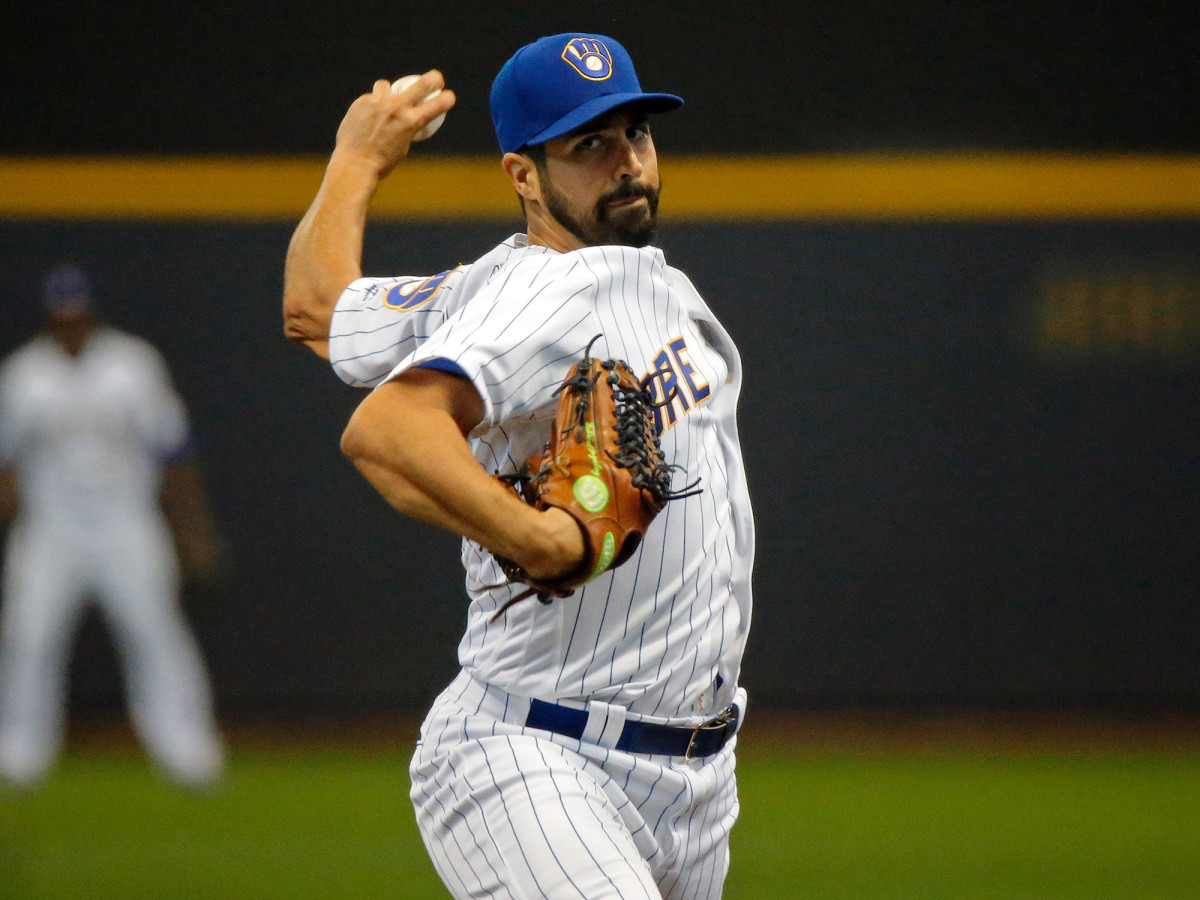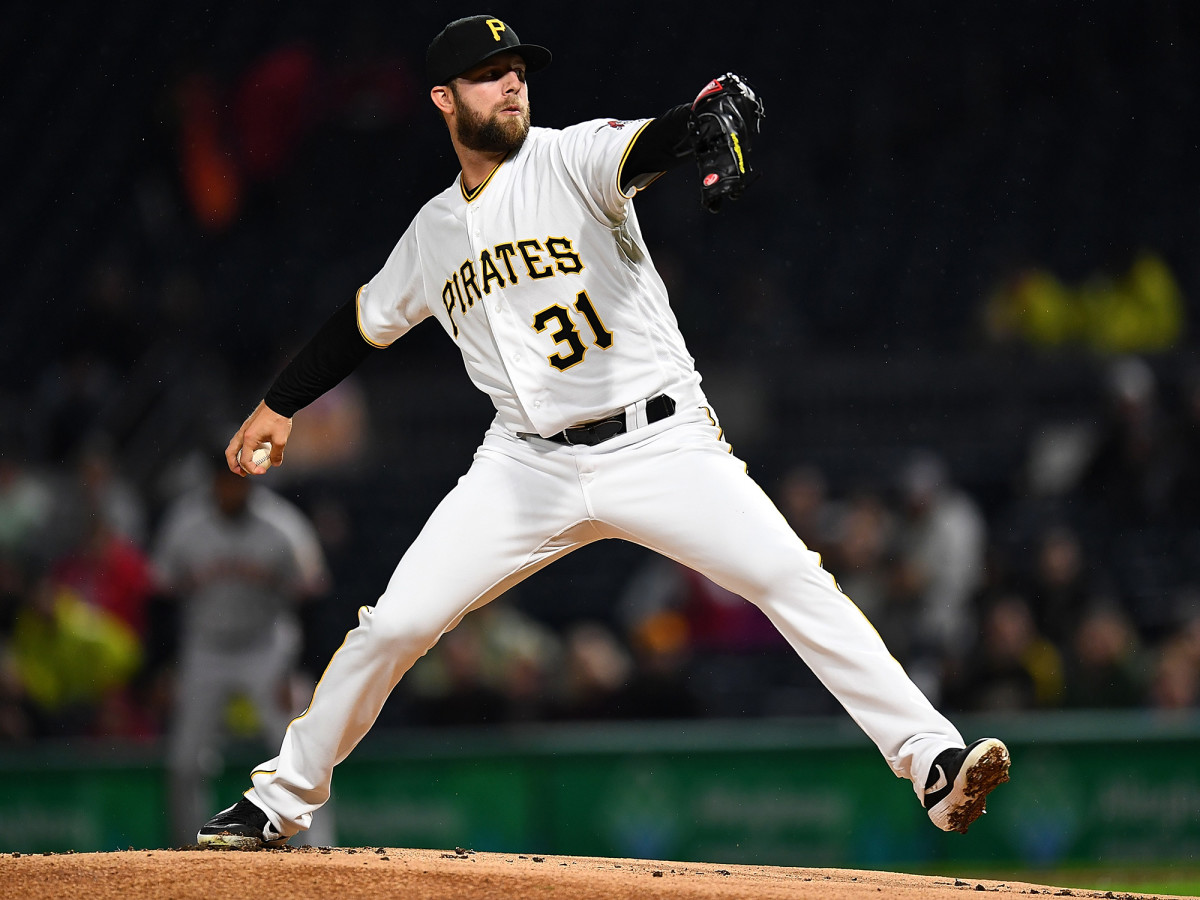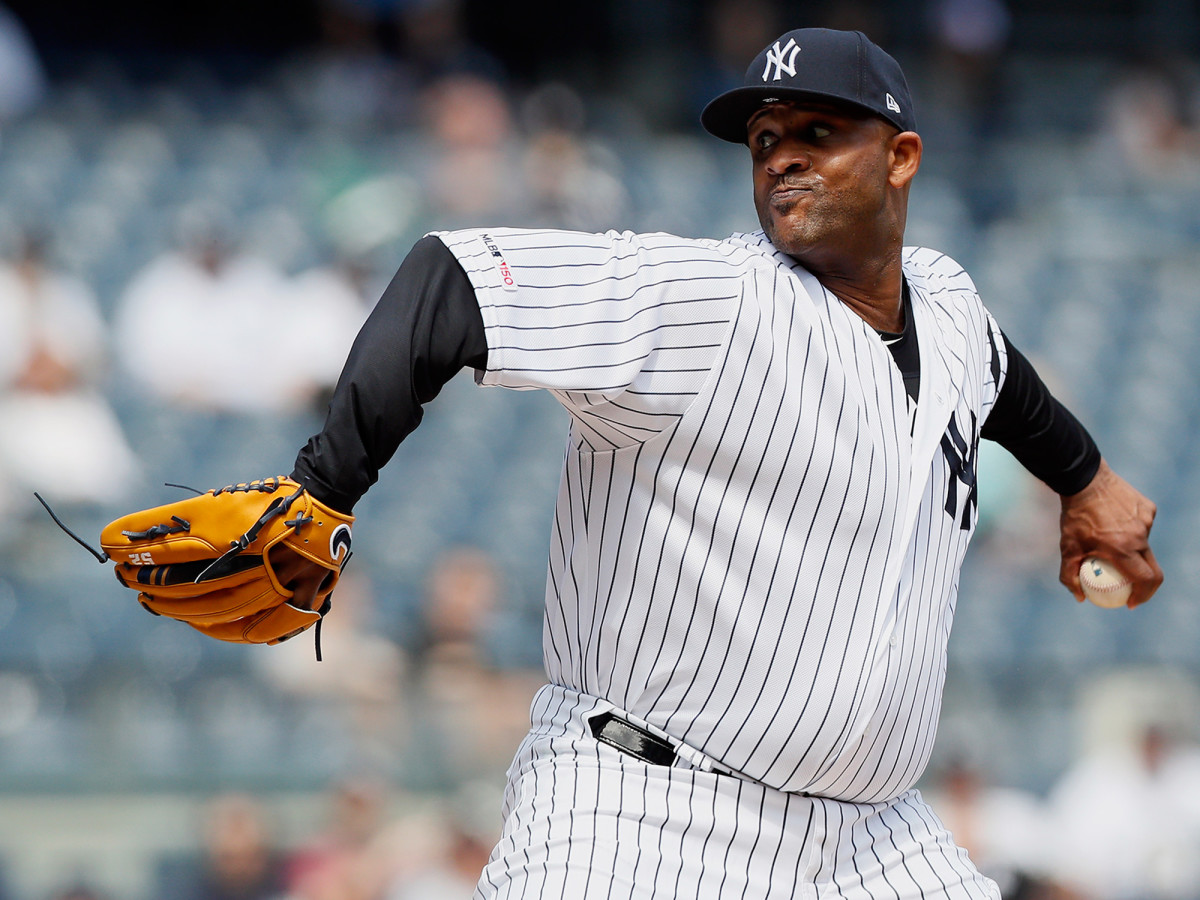MLB Power Rankings: Admiring the Perpetually Underappreciated Fifth Starter

For the commentary on this week’s MLB Power Rankings, we’re turning our attention to one of the most overlooked and underappreciated spots on any roster: Starter No. 5. Sure, the five-man rotation is no longer the stable institution it once was, but the fifth starter is (usually) still out there, and there are some interesting gems to be found.
Here, then, are 10 of baseball’s most intriguing fifth starters. (Because the precise roles at the back of the rotation can get a little fuzzy, we’re using the depth charts at Roster Resource and FanGraphs to help determine who exactly counts as a fifth starter.)
You can check out last week’s edition here, and read more about our power rankings format here. Rank on!
30. Miami Marlins (8-17; Last Week: 30)
Unlike just about everything else related to the Marlins, the fifth starter is really and truly ... good? Yep. Caleb Smith has looked outstanding in 2019, after his rookie season last year was cut short by surgery. In five starts so far, he has a sterling 2.17 ERA, with 37 strikeouts in 29 innings. On Thursday night against the Phillies, he had his best showing yet, striking out eight in six innings of work while allowing just one run. The 27-year-old’s nastiest offering is his slider, though he’s proven himself perfectly capable of earning strikeouts with everything in his arsenal. There may not be too much to be happy about right now in Miami, but Smith is absolutely at the top of the (short) list.
29. Kansas City Royals (8-17; Last Week: 28)
28. Baltimore Orioles (10-16; Last Week: 29)
Originally, this role belonged to Andrew Cashner. Now, though, it’s looking like John Means’s, who’s shown some unprecedented shine. Baltimore added him to its roster at the end of last season to protect him from the Rule 5 Draft—not a given at the time, as he’d never been considered a particularly strong prospect, or even a prospect, period. So far though, it’s looked smart.
John Means, 5Ks by Changeup (of his 6ks in 5 innings yesterday). pic.twitter.com/0m5Wr7WPDD
— Rob Friedman (@PitchingNinja) April 25, 2019
At a glance, he’s not particularly flashy, but he has a notably solid change-up, which he throws for roughly one in every three pitches. Averaging 80 mph, often clocking in even lower at the mid-70s, it can seriously throw hitters off when it follows a fastball—resulting in some pretty nasty swings-and-misses (see above). Like Caleb Smith in Miami, this is only an example of a relatively rare bright spot on a team without too many of those, but … well, even if there’s not much else in the way of positives here (Baltimore’s rotation is allowing more than six runs per start, more than that of any other team), there’s John Means.
27. Los Angeles Angels (10-16, Last Week: 20)
26. Chicago White Sox (9-14; Last Week: 24)
25. Boston Red Sox (11-15; Last Week: 21)
24. Cincinnati Reds (10-14; Last Week: 27)
And the second best rotation in the National League belongs to … the Reds? It does! Statistically, at least, by ERA (3.15) and FanGraphs WAR (3.1), they only trail the Pirates. Of course, this is complemented by one of baseball’s worst offenses, with a ghastly 66 OPS+, hence the low ranking and losing record. But for the moment, let’s focus on the good, which is this rotation, from top to bottom.
The No. 5 man is Tanner Roark, whose performance was famously up-and-down in his six seasons with the Nationals. Acquired by Cincinnati via trade in December, he’s been decidedly “up” in 2019. The 32-year-old’s strikeout rate is currently a personal best, and his 139 ERA+ is encouraging after back-to-back seasons of below-average performance. Not bad for No. 5—behind a dazzling Luis Castillo, a rebounding Sonny Gray, a promising Tyler Mahle, and, uh, Anthony DeSclafani. And, unfortunately, in front of this offense.
23. Colorado Rockies (11-14; Last Week: 26)
22. Toronto Blue Jays (11-14; Last Week: 25)
21. San Francisco Giants (11-14; Last Week: 23)
20. Texas Rangers (12-11; Last Week: 18)
19. Detroit Tigers (12-12; Last Week: 22)
18. Oakland A’s (14-13; Last Week: 15)
17. Washington Nationals (11-12; Last Week: 13)

16. Milwaukee Brewers (13-13; Last Week: 9)
So the likely occupant of this rotation spot hasn’t actually pitched yet in the big leagues this year. But it’s interesting that he’s here at all. The Brewers have reportedly brought back Gio González (the signing is not yet official), after he was released by the Yankees following a brief stint in Triple A. In three starts for Scranton/Wilkes-Barre in April, he hadn’t exactly looked great—but judge three minor-league starts by a veteran who had clearly (and reasonably) expected a major-league contract however you wish.
González became a key piece of Milwaukee’s staff down the stretch last year, and there’s nothing to suggest that he’s completely lost his stuff. More important than the specific current ability of González, though, is the fact that this team needed to make this signing in the first place. Milwaukee’s 85 ERA+ is among the worst in baseball; they’ve suffered some injuries and poor luck, yes, but it should have been clear at the beginning of the season that this club didn’t have the pitching depth it should to make another serious run. The Brewers’ pitching has been their biggest problem area so far; it’s not surprising that they’ve had to make an addition before May, but it might not be enough.
15. Cleveland Indians (14-10; Last Week: 14)
14. New York Mets (13-11; Last Week: 10)
And now for the other team who was linked to Gio González. The Mets reportedly didn’t get outbid, though—they just decided to pass, supposedly feeling he wouldn’t have been a true upgrade over their current fifth starter, Jason Vargas. Now, it’s true that González could have a wide range of potential outcomes here; as mentioned above, he didn’t look too hot in Triple A, and it’s perfectly reasonable to be uncertain that he’ll snap right back to how he pitched at his best from last year.
Even if the Mets were markedly pessimistic about him, though, it probably still would have been reasonable to deem him an upgrade over Vargas! It is not unkind or untrue to suggest that almost any pitcher would be an upgrade over Vargas. (By ERA+, baseball has only had four starters who have been worse this year, and two of them have already been demoted.) The Mets, in other words, needed an upgrade, and they missed an opportunity to get one. While their offense has been strong (112 OPS+), their pitching has …. not, in dead last with a 77 ERA+. This, of course, isn’t projected to hold—Noah Syndergaard isn’t going to continue to have a 5.90 ERA—but it’s certainly not an auspicious start, and the team has just lost out on a chance to make it better.
13. San Diego Padres (14-11; Last Week: 11)
12. Atlanta Braves (12-12; Last Week: 7)
Last year, Mike Soroka looked ready to dazzle, a 20-year-old rookie called up in May, immediately standing out with a strong debut. By June, though, he’d already made two separate appearances on the disabled list, and he was soon shut down for the season with a shoulder strain. He wasn’t a lock for the rotation to start this year, but he’s now the team’s fifth starter, and in just two starts he’s made it easy to remember just why he was such a prized prospect. (See: This slider [below]. Man.)
Mike Soroka, Filthy 87mph Back Foot Slider. 😨 pic.twitter.com/1hotTHkBhk
— Rob Friedman (@PitchingNinja) April 25, 2019
And he’s still just 21. Unfortunately for the Braves, however, a shaky bullpen has had no problem sabotaging the largely solid work of the rotation, an issue that doesn’t show signs of stopping.
11. Philadelphia Phillies (13-12; Last Week: 6)

10. Pittsburgh Pirates (12-11; Last Week: 8)
You’d be forgiven for assuming that there was no real hope left for Jordan Lyles. A decade ago, he was an exciting top prospect for the Astros, drafted in the first round out of high school. When he struggled in his first taste of the big leagues in 2011—not enough strikeouts, too many home runs—it didn’t seem like an issue; he was just 20, after all, and it seemed perfectly reasonable that he needed just a little more seasoning to become the pitcher he was projected to be. But this didn’t happen in 2012, or 2013, or after he was traded to the Rockies in 2014 or … you get the picture.
In the last few seasons, he bounced from Colorado to San Diego to Milwaukee, and Pittsburgh took a flier on him as a free agent last winter. It’s paid off. In four starts so far, Lyles has a 206 ERA+, which definitely isn’t sustainable, but it sure is encouraging. He’s been throwing his four-seam fastball and curveball more, his slider and sinker less, and he’s been rewarded with personal best strikeout and walk percentages. The Pirates’ rotation has been their greatest strength so far—as opposed to, say, their offense’s collective 80 OPS+—and Lyles has been a key piece of it.
9. Arizona Diamondbacks (15-11; Last Week: 19)
8. Chicago Cubs (12-11; Last Week: 16)
7. St. Louis Cardinals (15-9; Last Week: 17)
6. Minnesota Twins (13-9; Last Week: 12)
5. Seattle Mariners (16-11; Last Week: 4)
This one is either surprisingly inspiring or remarkably sad. In five starts so far, Félix Hernández has looked markedly better than he has at just about any point in the last two years. No, the velocity has not and will not return, but he’s doing much better at working around this problem; his curveball now makes up a sizeable chunk of his arsenal, his command has improved, and he has not been plagued by home runs. It’s good! This is all good. “Félix Hernández, fifth starter,” however, remains a deeply uncomfortable tagline.
It’s miles better than last year, sure. It’s still not how anyone would like to remember him. And it’s part of a Seattle pitching staff that has exceeded expectations by being perfectly average—which still feels like it shouldn’t be sustainable, but hey, it’s happening, and combined with an offense that continues to mash, the M’s have kept holding on to one of baseball’s best records.

4. New York Yankees (14-11; Last Week: 5)
Joining King Félix in the category of veterans rounding out their careers at the back of the rotation is C.C. Sabathia. This one, however, doesn’t feel quite so bittersweet: Sabathia’s aging curve hasn’t been as harsh, to say nothing of the fact that he’s five years older, and he’s already announced that this will be his final season. You’ve got plenty of solid ingredients here, then—a farewell tour that doesn’t take itself too seriously, from one of the game’s most beloved veterans, who just so happens to be an excellent case study in how to make necessary adjustments with age. And in three starts so far this year, despite (another) marked velo dip, Sabathia’s been mostly sharp, staying effective without blowing anyone away, as has been his style for the last few seasons. The Yankees’ overall hopes remain hindered by their hospital-ward-ful of injured players, but this is one area they don’t have to worry about.
3. Los Angeles Dodgers (16-11, Last Week: 3)
2. Tampa Bay Rays (16-9, Last Week: 1)
OK, this one’s fudging the rules. The Rays don’t technically have a fifth starter. Instead, they have the opener—usually Ryne Stanek, sometimes Hunter Wood—which makes for arguably baseball’s most interesting “fifth starter” of all. It’s helped them put together baseball’s most effective pitching staff (145 ERA+), alongside one of its stronger offenses (115 OPS+), which has put them right near the top of the league’s best clubs.
